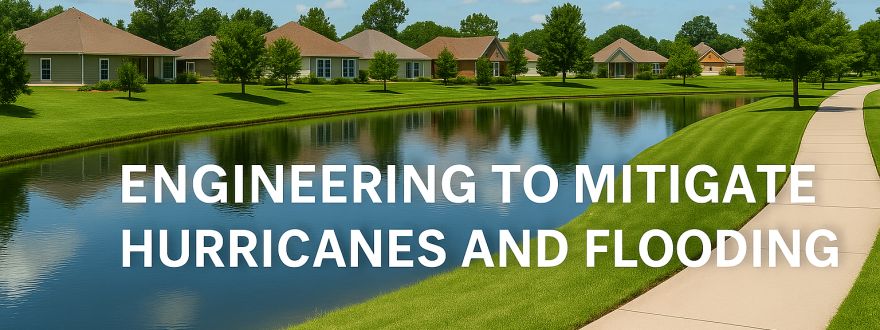
Built for the Storm: How neighborhood engineering could be the key to hurricane mitigation
When Hurricane Ian swept through Florida in 2022, it left a trail of devastation in its path—except for one standout community: Babcock Ranch. Featured in a recent Wall Street Journal video, this solar-powered, master-planned town was designed from the ground up to handle hurricanes and flooding—and it worked.
So, what can you take away from this? Whether you’re shopping for a home, renovating your current property, or just looking for peace of mind during storm season, there are valuable lessons here for protecting your home and your wallet.
Top Flood-Resistant Design Features to Look for
If you're buying a home in Florida (or anywhere near the coast), flood resilience isn't optional—it's essential. Here are the key things to consider when evaluating a home or neighborhood:
1. Elevated Land and Structures
- Babcock Ranch sits 30 feet above sea level, offering natural elevation that helps reduce flood risk.
- Look for homes built on raised foundations or stilts, especially in flood-prone zones.
2. Intentional Flooding Zones
- In Babcock Ranch, roads are designed to channel water away from homes.
- Ask if the neighborhood has a stormwater management plan or retention ponds to divert water.
3. Drainage, Grading, and Landscaping
- Poor grading sends water toward your home—not away.
- Choose homes with proper sloping, French drains, or dry wells that encourage runoff.
4. Durable, Wind-Resistant Materials
- Impact-rated windows, reinforced doors, and metal roofing can protect your home from both wind and water infiltration.
- Look for Florida Building Code compliance, which is stronger than many states.
Tips for Current Homeowners
Even if you already own a home, you can apply some of the same flood-mitigating principles to reduce risk and insurance premiums:
- Install flood vents in enclosed foundations
- Seal crawlspaces and elevate major appliances
- Use permeable pavers or gravel instead of solid concrete
- Install a sump pump with battery backup
- Elevate AC units and water heaters above base flood elevation
What If We All Built This Way?
Imagine a Florida where more homes and neighborhoods were designed like Babcock Ranch. The potential impact on both homeowners and the insurance industry would be massive:
- Fewer flood claims = more stable insurance rates
- Lower risk areas could see reduced premiums
- Insurance availability could improve, even in high-risk zones
- Community resilience increases — meaning faster recovery after major events
The more widespread these design principles become, the less strain we’ll see on disaster relief systems, rebuilding costs, and insurance markets. In short: a smarter home is a safer, more insurable home.
Flood Insurance: Still a Must-Have
Even the most resilient home can still flood. That’s why flood insurance is essential—especially in Florida, where 1 in 5 claims come from "low-risk" zones. Ask us about:
- Preferred risk policies for low-risk areas (they're affordable!)
- Excess flood coverage for high-value properties
- Bundling options to save on your total premium
Final Thoughts from Norton Insurance
Babcock Ranch shows us what’s possible when you plan for the storm instead of just reacting to it. Whether you're buying a new home or retrofitting an old one, these principles can protect your investment—and help keep insurance available and affordable for everyone.
Need help reviewing a flood zone, checking your current coverage, or getting a quote? We're here to help you weather the storm—before it ever hits.







